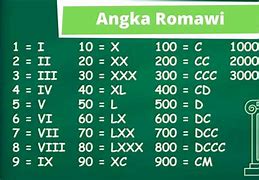
Tambahkan Informasi Akurat
Cara promosi di Google Maps selanjutnya yaitu dengan menambahkan informasi akurat seputar bisnis. Informasi ini meliputi jam operasional, nomor telepon, situs web, fasilitas, dan menu produk atau layanan dari bisnis. Informasi akurat bisa memudahkan Google mengindeks bisnis anda, sehingga bisa muncul di halaman pertama hasil pencarian.
Selain itu, adanya informasi ini bisa memudahkan calon konsumen menemukan lokasi bisnis anda. Hal ini karena lokasi bisnis mudah ditemukan di halaman pencarian Google. Adanya informasi akurat juga memudahkan konsumen mengetahui apa saja produk atau layanan yang anda tawarkan.
Perbanyak Foto Bisnis di Google Maps
Cara promosi di Google Maps bisa dilakukan dengan memperbanyak foto bisnis. Adanya foto bisa memudahkan Google mengindeks bisnis anda. Misalnya jika membuka bisnis cafe, maka saat pengguna mencari cafe terdekat akan muncul lokasi cafe anda di halaman hasil pencarian.
Oleh karena itu, pastikan menambah banyak foto seputar bisnis, misalnya foto menu yang disediakan, fasilitas, keadaan cafe, dan lain sebagainya. Usahakan juga mengunggah foto berkualitas yang bisa membuat calon konsumen tertarik. Sehingga semakin banyak foto yang diunggah, maka semakin besar peluang bisnis anda mudah ditemukan di Google.
Cara Membuat Iklan di Google Maps
Beriklan di Google Maps tidaklah terlalu rumit, Anda cukup mendaftarkan bisnis Anda ke Google Bisnisku. Untuk Anda yang belum tahu apa itu Google Bisnisku, simak penjelasannya berikut ini.
Buat Target dan Tawarkan Iklan Berdasarkan Lokasi Tertentu
Langkah selanjutnya, Anda harus menargetkan lokasi tertentu dan menawarkan lokasi untuk memaksimalkan iklan Anda. Caranya sebagai berikut:
1. Buka Kata Kunci dan Penargetan pilih Lokasi
– Di sini, pilih satu atau lebih lokasi dan sesuaikan tawarkan Anda di sebelah penyesuaikan tawaran.
– Buat kata kunci spesifik target. Selalu ingat untuk mengoptimalkan kata kunci yang Anda gunakan dalam iklan.
– Pantau terus iklan Anda dan gunakan data untuk mengoptimalkan iklan.
Cara promosi di Google Maps sangat penting buat anda yang ingin bisnis semakin terkenal dan berkembang. Seperti diketahui, Google Maps merupakan salah satu navigasi Google yang digunakan untuk mencari rute menuju suatu tempat. Selain bisa digunakan untuk mencari lokasi, Google Maps juga bisa digunakan sebagai strategi marketing.
Strategi marketing dengan Google Maps tentu sangat mudah dan praktis. Bahkan anda juga bisa mengoptimalkan Google Maps untuk bisnis tanpa mengeluarkan biaya alias gratis. Terdapat berbagai cara promosi yang bisa dilakukan melalui Google Maps, 7 diantaranya sebagai berikut.
Cara Melacak HP yang Hilang dengan Find My Device
Google memiliki fitur "Find My Device" yang berguna untuk melacak ponsel pengguna yang hilang. Untuk menggunakan fitur ini, simak langkah-langkah berikut:
Cara Melacak HP yang Hilang dengan Find My Mobile
Bagi pengguna HP Samsung, fitur "Find My Mobile" berguna untuk melacak ponsel yang hilang. Kini fitur tersebut sudah terintegrasi dengan SmartThings Find Samsung. Mengutip laman resmi Samsung, berikut langkah-langkah menggunakannya:
Nah, itu tadi sederet cara melacak ponsel yang hilang dengan Google Maps, email, hingga fitur bawaan produsen HP. Penting diperhatikan, perkiraan lokasi HP hilang yang diberikan mungkin akurat dan mungkin juga tidak. Namun info lokasi bisa dimanfaatkan untuk mencari dan mendapatkan kembali ponsel yang hilang tersebut.
Google's web mapping service (launched 2005)
Screenshot of Google Maps in a web browser
Afrikaans, Azerbaijani, Indonesian, Malay, Bosnian, Catalan, Czech, Danish, German (Germany), Estonian, English (United States), Spanish (Spain), Spanish (Latin America), Basque, Filipino, French (France), Galician, Croatian, Zulu, Icelandic, Italian, Swahili, Latvian, Lithuanian, Hungarian, Dutch, Norwegian, Uzbek, Polish, Portuguese (Brazil), Portuguese (Portugal), Romanian, Albanian, Slovak, Slovenian, Finnish, Swedish, Vietnamese, Turkish, Greek, Bulgarian, Kyrgyz, Kazakh, Macedonian, Mongolian, Russian, Serbian, Ukrainian, Georgian, Armenian, Hebrew, Urdu, Arabic, Persian, Amharic, Nepali, Hindi, Marathi, Bengali, Punjabi, Gujarati, Tamil, Telugu, Kannada, Malayalam, Sinhala, Thai, Lao, Burmese, Khmer, Korean, Japanese, Simplified Chinese, Traditional Chinese
Google Maps is a web mapping platform and consumer application offered by Google. It offers satellite imagery, aerial photography, street maps, 360° interactive panoramic views of streets (Street View), real-time traffic conditions, and route planning for traveling by foot, car, bike, air (in beta) and public transportation. As of 2020[update], Google Maps was being used by over one billion people every month around the world.[1]
Google Maps began as a C++ desktop program developed by brothers Lars and Jens Rasmussen in Australia at Where 2 Technologies. In October 2004, the company was acquired by Google, which converted it into a web application. After additional acquisitions of a geospatial data visualization company and a real-time traffic analyzer, Google Maps was launched in February 2005.[2] The service's front end utilizes JavaScript, XML, and Ajax. Google Maps offers an API that allows maps to be embedded on third-party websites,[3] and offers a locator for businesses and other organizations in numerous countries around the world. Google Map Maker allowed users to collaboratively expand and update the service's mapping worldwide but was discontinued from March 2017. However, crowdsourced contributions to Google Maps were not discontinued as the company announced those features would be transferred to the Google Local Guides program,[4] although users that are not Local Guides can still contribute.
Google Maps' satellite view is a "top-down" or bird's-eye view; most of the high-resolution imagery of cities is aerial photography taken from aircraft flying at 800 to 1,500 feet (240 to 460 m), while most other imagery is from satellites.[5] Much of the available satellite imagery is no more than three years old and is updated on a regular basis, according to a 2011 report.[6] Google Maps previously used a variant of the Mercator projection, and therefore could not accurately show areas around the poles.[7] In August 2018, the desktop version of Google Maps was updated to show a 3D globe. It is still possible to switch back to the 2D map in the settings.
Google Maps for mobile devices were first released in 2006; the latest versions feature GPS turn-by-turn navigation along with dedicated parking assistance features. By 2013, it was found to be the world's most popular smartphone app, with over 54% of global smartphone owners using it.[8] In 2017, the app was reported to have two billion users on Android, along with several other Google services including YouTube, Chrome, Gmail, Search, and Google Play.
Google Maps first started as a C++ program designed by two Danish brothers, Lars and Jens Eilstrup Rasmussen, and Noel Gordon and Stephen Ma, at the Sydney-based company Where 2 Technologies, which was founded in early 2003. The program was initially designed to be separately downloaded by users, but the company later pitched the idea for a purely Web-based product to Google management, changing the method of distribution.[9] In October 2004, the company was acquired by Google Inc.[10] where it transformed into the web application Google Maps. The Rasmussen brothers, Gordon and Ma joined Google at that time.
In the same month, Google acquired Keyhole, a geospatial data visualization company (with investment from the CIA), whose marquee application suite, Earth Viewer, emerged as the Google Earth application in 2005 while other aspects of its core technology were integrated into Google Maps.[11] In September 2004, Google acquired ZipDash, a company that provided real-time traffic analysis.[12]
The launch of Google Maps was first announced on the Google Blog on February 8, 2005.[13]
In September 2005, in the aftermath of Hurricane Katrina, Google Maps quickly updated its satellite imagery of New Orleans to allow users to view the extent of the flooding in various parts of that city.[14][15]
As of 2007, Google Maps was equipped with a miniature view with a draggable rectangle that denotes the area shown in the main viewport, and "Info windows" for previewing details about locations on maps.[16] As of 2024, this feature had been removed (likely several years prior).
On November 28, 2007, Google Maps for Mobile 2.0 was released.[17][18][19] It featured a beta version of a "My Location" feature, which uses the GPS / Assisted GPS location of the mobile device, if available, supplemented by determining the nearest wireless networks and cell sites.[18][19] The software looks up the location of the cell site using a database of known wireless networks and sites.[20][21] By triangulating the different signal strengths from cell transmitters and then using their location property (retrieved from the database), My Location determines the user's current location.[22]
On September 23, 2008, coinciding with the announcement of the first commercial Android device, Google announced that a Google Maps app had been released for its Android operating system.[23][24]
In October 2009, Google replaced Tele Atlas as their primary supplier of geospatial data in the US version of Maps and used their own data.[25]
On April 19, 2011, Map Maker was added to the American version of Google Maps, allowing any viewer to edit and add changes to Google Maps. This provides Google with local map updates almost in real-time instead of waiting for digital map data companies to release more infrequent updates.
On January 31, 2012, Google, due to offering its Maps for free, was found guilty of abusing the dominant position of its Google Maps application and ordered by a court to pay a fine and damages to Bottin Cartographer, a French mapping company.[26] This ruling was overturned on appeal.[27]
In June 2012, Google started mapping the UK's rivers and canals in partnership with the Canal and River Trust. The company has stated that "it would update the program during the year to allow users to plan trips which include locks, bridges and towpaths along the 2,000 miles of river paths in the UK."[28]
In December 2012, the Google Maps application was separately made available in the App Store, after Apple removed it from its default installation of the mobile operating system version iOS 6 in September 2012.[29]
On January 29, 2013, Google Maps was updated to include a map of North Korea.[30] As of May 3, 2013[update], Google Maps recognizes Palestine as a country, instead of redirecting to the Palestinian territories.[31]
In August 2013, Google Maps removed the Wikipedia Layer, which provided links to Wikipedia content about locations shown in Google Maps using Wikipedia geocodes.[32]
On April 12, 2014, Google Maps was updated to reflect the annexation of Ukrainian Crimea by Russia. Crimea is shown as the Republic of Crimea in Russia and as the Autonomous Republic of Crimea in Ukraine. All other versions show a dotted disputed border.[33]
In April 2015, on a map near the Pakistani city of Rawalpindi, the imagery of the Android logo urinating on the Apple logo was added via Map Maker and appeared on Google Maps. The vandalism was soon removed and Google publicly apologized.[34] However, as a result, Google disabled user moderation on Map Maker, and on May 12, disabled editing worldwide until it could devise a new policy for approving edits and avoiding vandalism.[35]
On April 29, 2015, users of the classic Google Maps were forwarded to the new Google Maps with the option to be removed from the interface.[36]
On July 14, 2015, the Chinese name for Scarborough Shoal was removed after a petition from the Philippines was posted on Change.org.[37]
On June 27, 2016, Google rolled out new satellite imagery worldwide sourced from Landsat 8, comprising over 700 trillion pixels of new data.[38] In September 2016, Google Maps acquired mapping analytics startup Urban Engines.[39]
In 2016, the Government of South Korea offered Google conditional access to the country's geographic database – access that already allows indigenous Korean mapping providers high-detail maps. Google declined the offer, as it was unwilling to accept restrictions on reducing the quality around locations the South Korean Government felt were sensitive (see restrictions on geographic data in South Korea).[40]
On October 16, 2017, Google Maps was updated with accessible imagery of several planets and moons such as Titan, Mercury, and Venus, as well as direct access to imagery of the Moon and Mars.[41][42]
In May 2018, Google announced major changes to the API structure starting June 11, 2018. This change consolidated the 18 different endpoints into three services and merged the basic and premium plans into one pay-as-you-go plan.[43] This meant a 1400% price raise for users on the basic plan, with only six weeks of notice. This caused a harsh reaction within the developers community.[44] In June, Google postponed the change date to July 16, 2018.
In August 2018, Google Maps designed its overall view (when zoomed out completely) into a 3D globe dropping the Mercator projection that projected the planet onto a flat surface.[45]
In January 2019, Google Maps added speed trap and speed camera alerts as reported by other users.[46][47]
On October 17, 2019, Google Maps was updated to include incident reporting, resembling a functionality in Waze which was acquired by Google in 2013.[48]
In December 2019, Incognito mode was added, allowing users to enter destinations without saving entries to their Google accounts.[49]
In February 2020, Maps received a 15th anniversary redesign.[50] It notably added a brand-new app icon, which now resembles the original icon in 2005.
On September 23, 2020, Google announced a COVID-19 Layer update for Google maps, which is designed to offer a seven-day average data of the total COVID-19-positive cases per 100,000 people in the area selected on the map. It also features a label indicating the rise and fall in the number of cases.[51]
In January 2021, Google announced that it would be launching a new feature displaying COVID-19 vaccination sites.[52]
In January 2021, Google announced updates to the route planner that would accommodate drivers of electric vehicles. Routing would take into account the type of vehicle, vehicle status including current charge, and the locations of charging stations.[53]
In June 2022, Google Maps added a layer displaying air quality for certain countries.[54]
In September 2022, Google removed the COVID-19 Layer from Google Maps due to lack of usage of the feature.[55]
Cara Melacak HP yang Hilang dengan Find My iPhone
Pengguna dapat memanfaatkan fitur "Find My iPhone" untuk menemukan perangkat iPhone yang hilang. Untuk mengaktifkannya memerlukan akun Apple ID yang terhubung dengan iPhone yang hilang. Ikuti langkah-langkah berikut:
Perbanyak Ulasan Positif di Google Maps
Cara promosi di Google Maps selanjutnya yaitu dengan memperbanyak ulasan positif. Ulasan positif bisa menarik calon konsumen untuk mendatangi bisnis anda. Selain itu, adanya ulasan juga bisa membuat bisnis terlihat lebih profesional, berkualitas, dan terpercaya. Ulasan bisa didapatkan dengan memintanya secara langsung kepada setiap konsumen yang datang ke lokasi bisnis.
Selain itu, ulasan juga bisa dilakukan dengan meminta bantuan jasa komentar profesional. Adanya jasa komentar dan ulasan untuk Google Maps sangat membantu meningkatkan kredibilitas bisnis. Biasanya jasa ulasan menggunakan akun asli dari Local Guide. Banyaknya ulasan positif yang anda dapatkan tentu bisa menciptakan citra positif bisnis di mata konsumen.
Apa Itu Google Bisnisku
Google Bisnisku adalah fitur yang bisa digunakan para pemilik usaha untuk mempermudah calon konsumen mengetahui informasi lengkap seputar bisnis mereka. Mulai dari nama usaha, alamat, nomor telepon, email, nomor telepon, jam operasional, foto, hingga review dari pelanggan.























